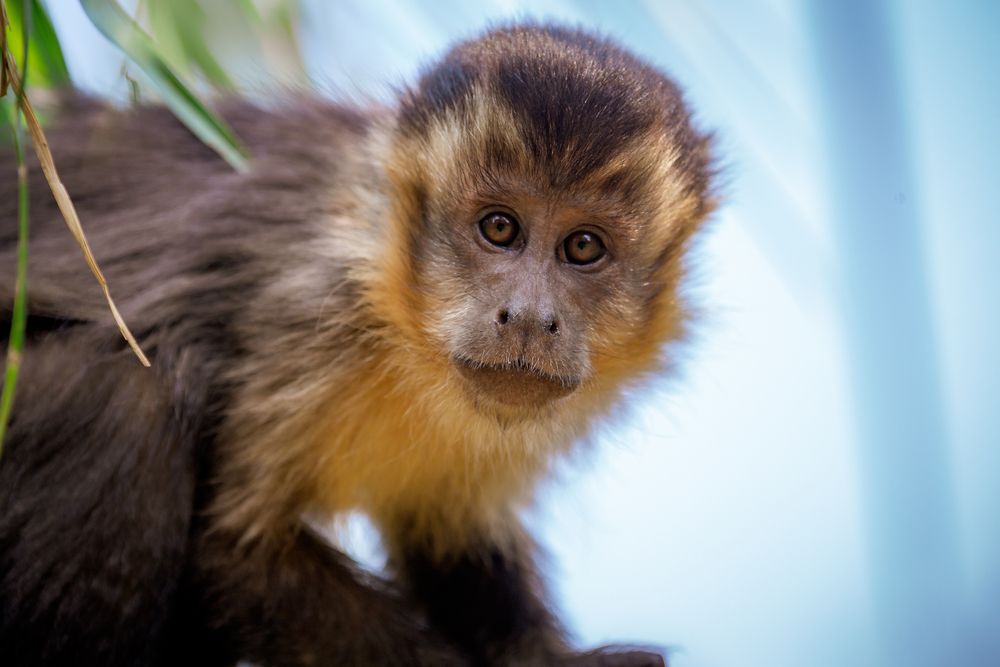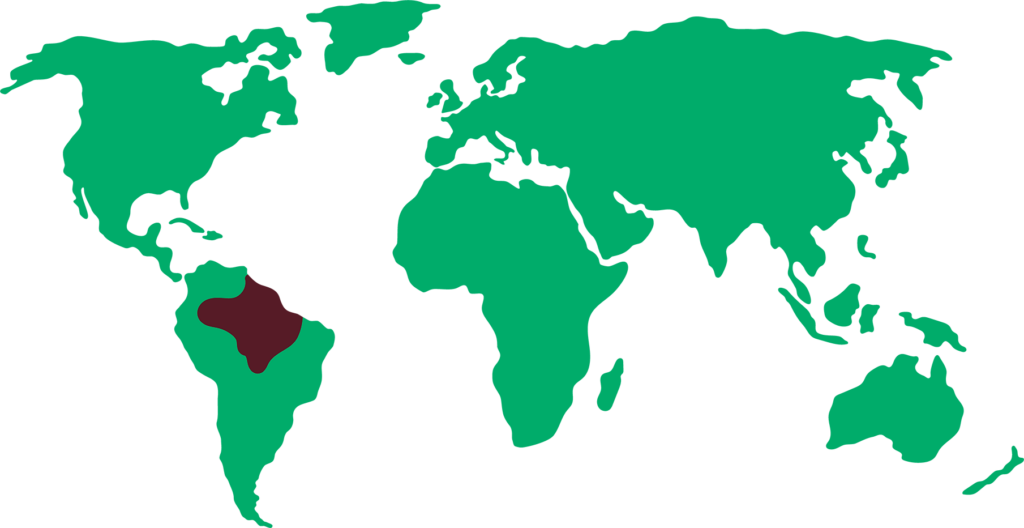Tufted capuchin
Sapajus apella

Length

57 cm
weight

3,5 kg
Lifespan

40 years
It is a species of capuchin monkey that, along with the rest, is considered to be the most intelligent monkey of the platyrrhines or New World monkeys. It is also known as brown capuchin or black-capped capuchin.
General characteristics
Its coat is brown in color and can vary from light to dark tones in different parts of its body. Generally, the tail and limbs are darker, while the belly is lighter than the rest of the body.
On the head it has a tuft of long, dark hair that stands upright on the head. Hence the name tufted capuchin.
The tail measures between 38 and 49 cm. It is prehensile and strong and can be used for grasping, as a fifth limb.
Feeding
They are omnivorous animals that feed mainly on fruits, nuts, insects, small invertebrates and even vertebrates in some cases.
Behaviour
The tufted capuchins are diurnal and live in trees. But they often come down to the ground to forage or to go from one tree to another when the distance between them is too far apart to jump.
In the wild, they gather in groups of 10 to 20 individuals with a strong social hierarchy. Within each group there is a male adult who is the leader and enjoys a series of privileges in both feeding and reproduction.
They are intelligent animals that can use natural tools to get what they want. In Palmitos Park it can be frequently observed that they use stones to break nutshells. They are also very noisy and expressive, being able to communicate with different facial expressions and sounds based on the situation. Up to 17 different vocalizations can be distinguished.
Reproduction
Generally only the dominant male of the group is the breeder.
The gestation period lasts approximately 160 days, during which a single calf is born. The mother carries the calf on her back and feeds it for 9 months.
Threats
Habitat loss and fragmentation due to deforestation. There is no significant threat that could produce an aggressive decline of this species.
Distribution
It is widely distributed in South America. They can be found in a wide variety of habitats, from tropical and subtropical forests to dry forests.

Did you know?
They indicate their interest in reproducing by raising and holding their eyebrows for long periods.
They are good friends with the squirrel monkeys.
They have an excellent spatial memory and can remember the exact location of fruit trees they frequently visit.
Conservation status
